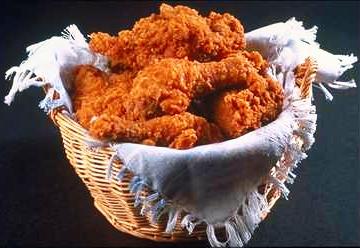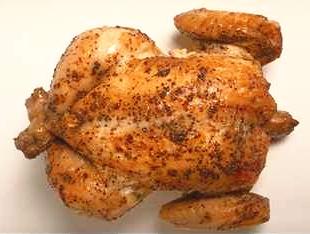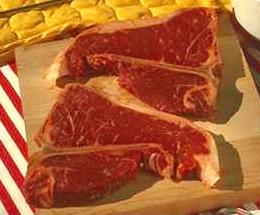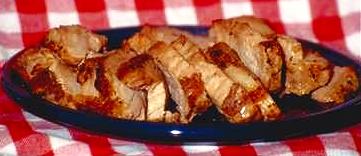

































 Note: All meat prices in this article were obtained on September 28, 2018.
Note: All meat prices in this article were obtained on September 28, 2018.
 When buying chicken that still contains the bone your best buy is usually the most expensive package that contains the same number of identical chicken parts, such as breasts, drumsticks, or wings. The reason is because each chicken piece will contain approximately the same amount of bone but the more expensive packages will contain more meat. In other words, you will be purchasing the largest chickens with the most meat on their bones instead of the smaller chickens with less meat on their bones.
When buying chicken that still contains the bone your best buy is usually the most expensive package that contains the same number of identical chicken parts, such as breasts, drumsticks, or wings. The reason is because each chicken piece will contain approximately the same amount of bone but the more expensive packages will contain more meat. In other words, you will be purchasing the largest chickens with the most meat on their bones instead of the smaller chickens with less meat on their bones.| Chicken Piece | Meat | Skin | Bone | Average Weight | Average Cost per Pound | Meat Cost per Pound | Meat and Skin Cost per Pound |
| Breast | 67% | 12% | 21% | 0.99 Pounds | $2.07 | $3.09 | $2.62 |
| Thigh | 57% | 22% | 21% | 0.45 Pounds | $1.60 | $2.81 | $2.03 |
| Drumstick | 60% | 12% | 28% | 0.31 Pounds | $1.70 | $2.83 | $2.36 |
| Wing | 31% | 23% | 46% | 0.25 Pounds | $2.62 | $8.45 | $4.85 |
| Average Above 4 Pieces | 60% | 15% | 25% | - | - | - | - |
| Whole Chicken including Neck and Back | 49% | 17% | 34% | 4.83 Pounds | $1.92 | $3.92 | $2.91 |

| Type of Meat | Percent Lean | Price per Pound including Fat | Price per Lean Pound excluding Fat |
| Ground Beef | 73%-75% | $3.49 | $4.72 |
| Ground Chuck | 80% | $3.91 | $4.89 |
| Ground Steak | 86% | $5.05 | $5.94 |
| Ground Sirloin | 90% | $5.50 | $6.11 |
| Ground Extra Lean | 93% | $5.84 | $6.28 |
 Club Steaks, T-bone Steaks, Porterhouse Steaks: All three of these steaks have the same bone and they are cut from the same area of the cow. The difference is the size of the fillet. The fillet is the smaller piece of meat on one side of a T-bone steak. It is usually more tender and more flavorful than the meat on the opposite side of the bone.
Club Steaks, T-bone Steaks, Porterhouse Steaks: All three of these steaks have the same bone and they are cut from the same area of the cow. The difference is the size of the fillet. The fillet is the smaller piece of meat on one side of a T-bone steak. It is usually more tender and more flavorful than the meat on the opposite side of the bone. Pork Loins: A better way to buy pork is to purchase boneless pork loins. A pork loin is usually one of the more tender and better tasting cuts of pork. Each grocery store will label their pork loins as pork tenderloins, or as pork loin roasts, or as whole pork loins. Some stores will sell one-half of a pork loin per package and some stores will sell a whole pork loin per package.
Pork Loins: A better way to buy pork is to purchase boneless pork loins. A pork loin is usually one of the more tender and better tasting cuts of pork. Each grocery store will label their pork loins as pork tenderloins, or as pork loin roasts, or as whole pork loins. Some stores will sell one-half of a pork loin per package and some stores will sell a whole pork loin per package.
